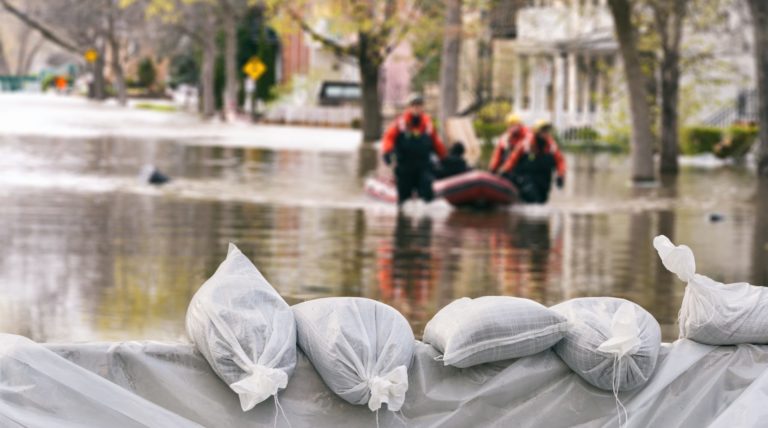Engineering team addresses flood management, urban planning and sustainable development
Tags:

This story originally appeared on YFile on April 9, 2021
Climate change and urbanization are increasing the frequency and intensity of floods in cities. Three researchers at the Lassonde School of Engineering sought to address this, perfectly illustrating just how York University brings expertise to the table to build new tools and strategies to tackle the historic crises we are currently facing.
With funding from the Natural Sciences and Engineering Research Council of Canada (NSERC), Professor Usman Khan led this new research in collaboration with Professor Mojgan Jadidi and grad student Sarah Kaykhosravi.


Their work, which focused on three Canadian cities, determined that Low Impact Development (LID), a technique that reduces stormwater runoff to manage urban flooding, was one way to solve this mounting, global threat. This research also investigated the impact of climate change and urbanization on the demand for LID in cities.
“The results of our study provide us with a comprehensive understanding of the effect of climate change and urbanization on the demand for LID, which can be used for flood management, urban planning and the sustainable development of cities,” Khan says.
Khan is an expert in water resources engineering, focusing on urban hydrology, including flood risk assessment and uncertainty analysis, sustainable water resource management and infrastructure, and the impacts of climate change on these systems.
This research was published in the esteemed journal Water (2020) – the article titled “The Effect of Climate Change and Urbanization on the Demand for Low Impact Development for Three Canadian Cities.”
Their work, which focused on three Canadian cities, determined that Low Impact Development (LID), a technique that reduces stormwater runoff to manage urban flooding, was one way to solve this mounting, global threat. This research also investigated the impact of climate change and urbanization on the demand for LID in cities.
Increased frequency of flooding cause for concern
Floods are a major growing natural hazard. They cause the loss of human lives and properties. “The frequency of flooding has increased during the last two decades, from 1995 to 2015. During this time, floods caused 157,000 fatalities globally and [negatively] affected the quality of life of 2.3 billion people,” Khan explains.
In terms of economic losses, Khan also points out that between 2006-16, the average annual costs associated with flooding were about $50 billion U.S. “This ranks first among all-natural disasters,” he emphasizes.

Low Impact Development shows great promise
Low Impact Development (LID) is an approach to land development that imitates the natural movement of water so as to manage stormwater. It makes use of small design techniques and landscape features that are effective in filtering, storing, evaporating and detaining rainwater and runoff. It does this by increasing perviousness and providing storage volume to control stormwater runoff at the source.
Importantly, LID emphasizes conservation and use of on-site natural features to protect water quality. Indeed, the benefits of LID include stormwater volume control – hence, flood reduction; water quality protection and improvement; and increased public health, livability of cities and eco-friendly communities.
However, the impact of climate change and urbanization on the demand or need for LID in cities, both now and in the future, is not known.
Study sought to evaluate demand for LID
That’s where Khan’s team comes in. The objective of their research was to evaluate the demand for LID under different climate change and urban growth scenarios, based on the hydrological-hydraulic index (HHI), which ranks the highest volumes of runoff in flood generation.
To do this, the team focused on 12 scenarios. Four climate change and three urbanization conditions were developed. The HHI for three Canadian cities (Toronto, Montreal, and Vancouver) were estimated, evaluated and compared for these scenarios.
“This research holistically covers the scenarios under which either only one change takes place (i.e., climate or urbanization) or both (i.e., climate and urbanization), and discusses the causes and effects of the future demand for LID for three selected Canadian cities. It also discusses the contribution of climate change and urbanization factors on the change of hydrological and hydraulic processes,” Khan sums up.
Read the full story on YFile.